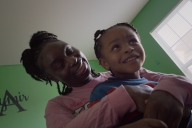You have /5 articles left.
Sign up for a free account or log in.
Tension between the races is a visible reality on many college campuses. But African-American students who attend predominantly white universities also experience significant internal tensions — over their cultural identity and their desire to acclimate — that often goes unnoticed, says a new study.
The study, released today and published in Communication Education, a journal of the National Communication Association, sought to examine the experiences of a small sample of African-American students on campuses that had experienced open racial tensions between black and white students.
Researchers conducted interviews at three predominantly white institutions -- a Midwestern public university, a Midwestern private university and a Southwestern public university. On all three campus, tensions were spurred by incidents involving white fraternity members wearing blackface at parties, said Jake Simmons, one of the study's researchers and a professor at Angelo State University. The researchers conducted two focus groups at each university, made up of five to seven African-American participants per group. In each group, researchers used a set of five questions to guide a discussion about race.
Using a concept called "relational dialectics," which seeks to understand the nature of intercultural communication, the researchers analyzed transcripts from the student focus group sessions and used coding processes to look at particular utterances and “figure out what was reappearing.” They then used that data to derive tension categories, which highlighted the “internal forces representing the inherent contradictions between one’s personal identity and the social expectations the individual feels,” the study says.
One finding that emerged from the data was that there was an inner “battle” between African-American students' blackness and the perceived whiteness of their university. Students struggled to be proud of themselves and their race, while trying to adapt to the “whiteness of their schools,” the study says.
The students also admitted they did not feel comfortable speaking out in class because they were worried that they spoke differently from their white peers.
Another tension that the students were struggling with was between talking to others about their culture and maintaining silence. One student participant in the study said he wanted to talk in class about how a Toni Morrison novel resonated within the African-American community. But at the same time, he didn’t want to “perpetuate stereotypes” or draw attention to himself “as a black man trying to explain a black writer to a white audience.”
A final intra-individual dialectical tension the researchers found was a pull between the students’ past and their future. The students said they felt loyalty to their family, friends and others in the African-American community. But they also envisioned a future of achievement that many of them did not enjoy before attending college. They feared that individuals from their past would not understand their pursuit of education, and in some cases they felt like traitors, the study says.
Simmons said that these results were not particularly surprising to him, but the students' stories show that universities need to take action.
“When so much of what is happening socially is talking about how we are moving through racism, this study is about how we are not,” said Jake Simmons, one of the study’s researchers and a professor at Angelo State University. “White administrators at predominantly white universities are failing their students.”
Simmons said he hopes the results of the study may change the ways that universities are “engaging” African-American students, as well as their families. He said university administrators are ultimately responsible for making this happen. The study suggests that university leaders “acknowledge these dialectical tensions” and create programs that give voices to both black and white cultural perspectives. Simmons said university leaders should also provide training for faculty on the need for and inclusion of diversity in their classes.








